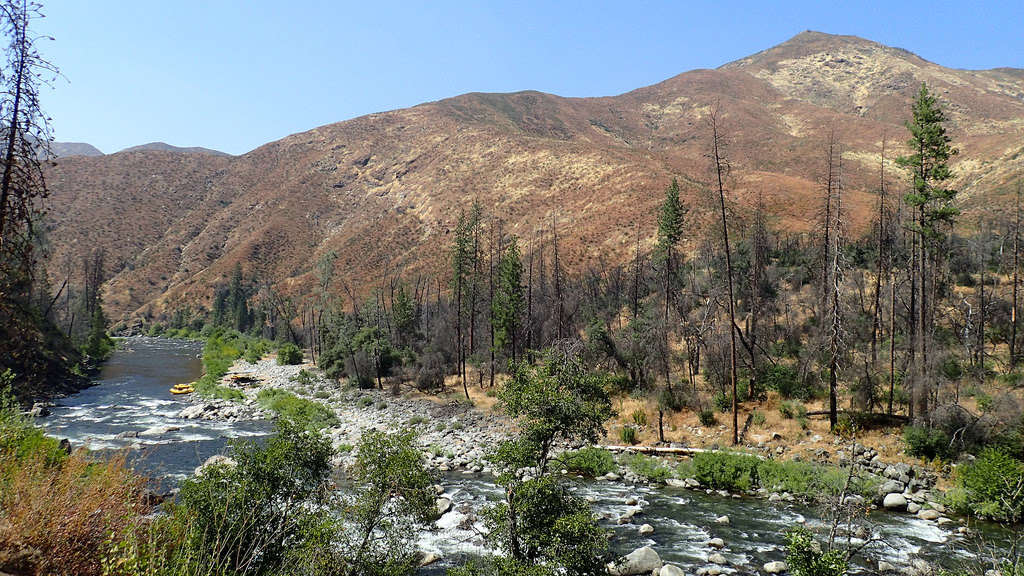Fish Food for Food Fish

by FISHBIO
3-4-2019
Once the introduction of non-native fishes began in California, both for food and for sport, it didn’t take long for managers to decide they needed to augment the forage available for the introduced species. Even the reservoir-anglers’ beloved kokanee, prized for its culinary quality, was sometimes stocked to serve as forage for larger trout! In the early days of fish introductions, when food and game fish were transported from east of the Rocky Mountains via railway car or other means, additional kinds of fish were frequently included in the shipments as forage to sustain the target species – often bass – during the journey. Such was probably the case for green sunfish (pictured above) and bluegill. Although the historical records aren’t entirely clear, both species have been swimming in California waters since around the turn of the 19th century. Later, both species were broadly distributed throughout the state due to their popularity with anglers, particularly bluegill.
Threadfin shad are perhaps the most important introduced pelagic forage fish in the state’s deep reservoirs. These fish made their first trip to California by airplane, arriving in San Diego from Tennessee in the early 1950s. They were held in brood ponds, and their offspring were stocked in a San Diego Reservoir in 1954. Ten years later, threadfin shad could be found in dozens of impoundments throughout the state, and the species’ tolerance of saltwater allowed it to colonize the Sacramento-San Joaquin Delta. Wakasagi, a species of freshwater smelt, was also brought to California in the 1950s and was considered to be the same species as delta smelt, which was not recognized as a distinct species until 1963. Since delta smelt were apparently difficult to come by in the state (and still are…), wakasagi were sourced in Japan and planted in a range of habitats from Humboldt to San Bernardino counties. After they became successfully established there, they were stocked in Lake Almanor in Plumas County by the 1970s. From there, the species colonized Lake Oroville in Butte County and spread downstream into the rivers of the Central Valley and the Delta. The interactions between wakasagi and delta smelt are now a source of concern, as the two species can hybridize and the more resilientwakasagi may compete with Delta smelt for food and space.
A number of other species are now found throughout California after likely being introduced by anglers who released their unused bait. These species, including golden shiner, red shiner, and fathead minnow, continue to be commercially propagated in California for the fishing community to use as live bait, for clinical research, and various monitoring studies such as toxicity testing. Not all attempted introductions of forage fish were successful, however. Among the species that failed to become established is the Bonneville cisco, a species of whitefish native to Utah and Idaho that was intended to bolster the food supply for lake trout (also introduced) in Lake Tahoe in the 1960s. As our series has revealed, non-native fish found their way to California for a whole range of reasons. They have been introduced as food for California’s hungry humans, planted as sport for the Golden State’s anglers, and stocked as forage to enhance growth and survival for other introduced fishes. However, a number of exotic fishes have been – and continue to be – released into our waterways for yet another reason: biological control of unwanted pests. More on that to come in a future Fish Report!
FISHBIO is a dedicated group of research scientists, engineers, and technicians that specialize in counting, tracking, and analyzing trends in fish and wildlife populations throughout the world. An expert staff, technical capacity, and state-of-the-art equipment make FISHBIO a trailblazer in aquatic research. For more information, please visit FISHBIO.com
< Previous Report Next Report >
More Reports

2-19-2019
While polar bears are often the face of climate change vulnerability, freshwater fish may face just as many or even...... Read More

2-5-2019
Imagine being on a road trip to visit friends or family, only to find that the road you’re used to...... Read More

